Pediatric brain tumors are the leading cause of cancer-related death in children, yet the fight against them remains disjointed, underfunded, and often siloed.
Despite decades of dedicated work by researchers, nonprofits, and institutions, meaningful progress remains painfully slow. The field is fractured—research institutions compete for limited grants, nonprofit organizations pursue parallel but uncoordinated initiatives, pharmaceutical companies struggle to justify investment in small patient populations, and the National Cancer Institute (NCI) is constrained by both bureaucracy and budget cuts. The time has come to confront a simple truth: no single stakeholder can solve this crisis alone. Only through robust collaboration and transparent resource sharing can we deliver real breakthroughs for the children and families who need them most.
Our March blog proposed a course of action to address the issues and secure the opportunities now facing the community. What’s needed now is leadership.
The biology of pediatric brain tumors is staggeringly complex.
With over 120 distinct types, these tumors demand a research approach that is not only comprehensive but also deeply integrated across disciplines and sectors. Yet too often, valuable data—genomic profiles, imaging libraries, treatment response patterns—are locked within institutional firewalls or scattered across disconnected databases. This fragmentation slows discovery, stifles innovation, and leads to duplicated efforts that waste precious time and funding.
Nonprofit organizations, often born from grief and driven by passion, have been instrumental in raising awareness and funding research. However, their impact is limited when they work in isolation or without clear alignment with the most promising scientific pathways. The same is true for academic institutions pursuing individual breakthroughs without benefiting from shared preclinical models, data ecosystems, or patient registries.
Meanwhile, pharmaceutical companies face immense economic and regulatory challenges in pediatric oncology, where patient numbers are small and trials are difficult to design. Yet their expertise in drug development and capacity for large-scale manufacturing remain vital to the pipeline of new treatments. Unlocking this potential requires trusted, strategic partnerships that de-risk participation and emphasize shared value rather than market size.
At the center of it all, the NCI has both the mandate and the opportunity to act as a unifying force. Through targeted funding mechanisms, policy leadership, and support for open science platforms, the NCI can foster the kind of infrastructure that connects these silos—bringing researchers, funders, and industry together under a common purpose.
Collaboration is not a feel-good ideal. It is a strategic imperative.
Imagine a world in which clinical trial designs are harmonized, where AI analyzes unified multi-omic datasets to find patterns invisible to the human eye, where redundant projects are merged to scale promising discoveries faster. Imagine a single, global pediatric brain tumor data common, accessible to every scientist committed to a cure. This is not science fiction. It is entirely within reach—if we choose to work together.
The urgency could not be greater.
Every day, families hear the words “inoperable,” “incurable,” or “no further options.” These children deserve more than incremental progress. They deserve a bold, coordinated strategy that maximizes every dollar, every dataset, and every ounce of knowledge we possess. To honor them, we must put aside institutional pride, dismantle silos, and build a true alliance—one defined not by competition, but by collaboration in service of a cure.
But what if NCI is not up for the challenge, or denied the opportunity by the White House? The May blog will offer another option.






